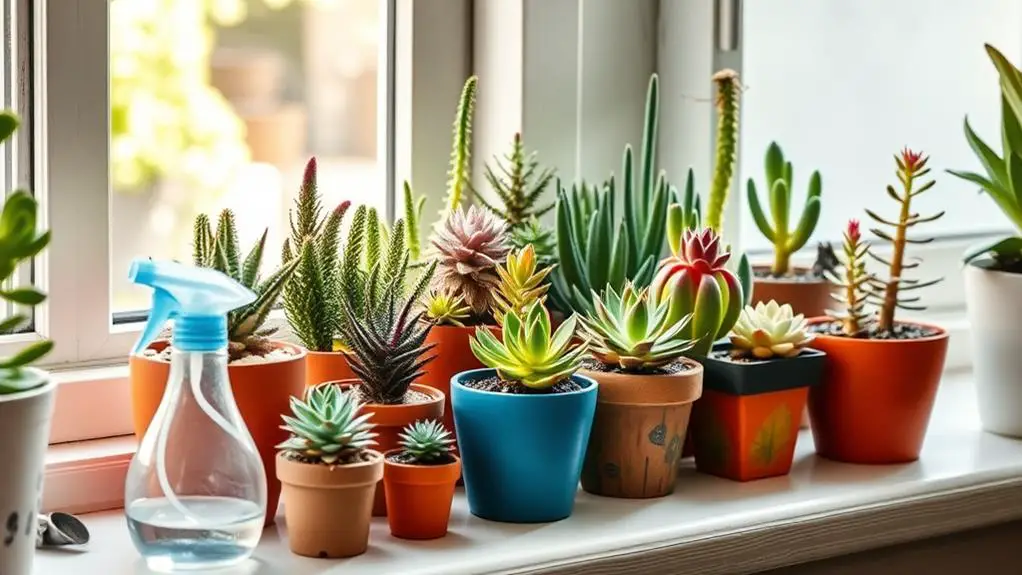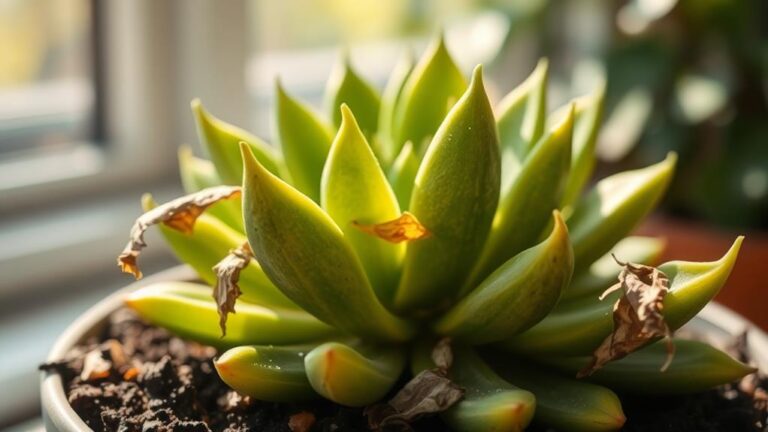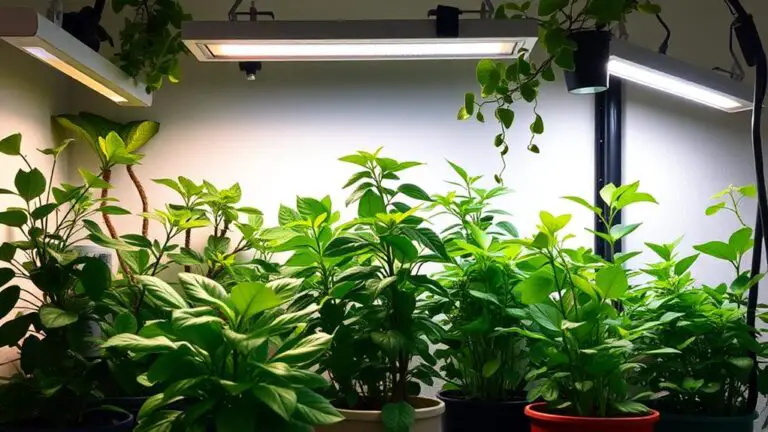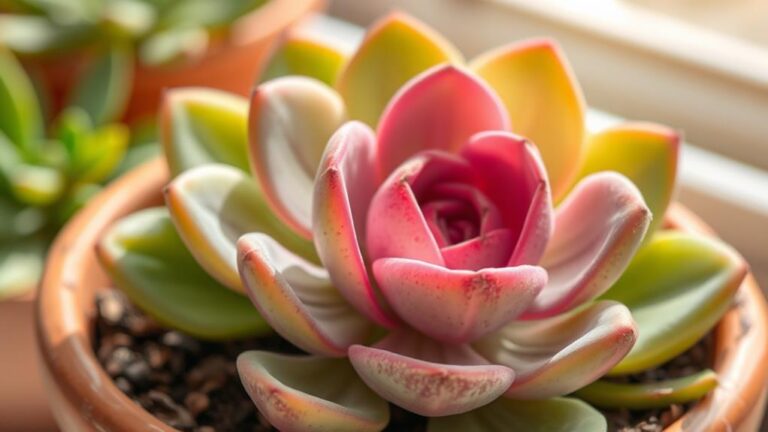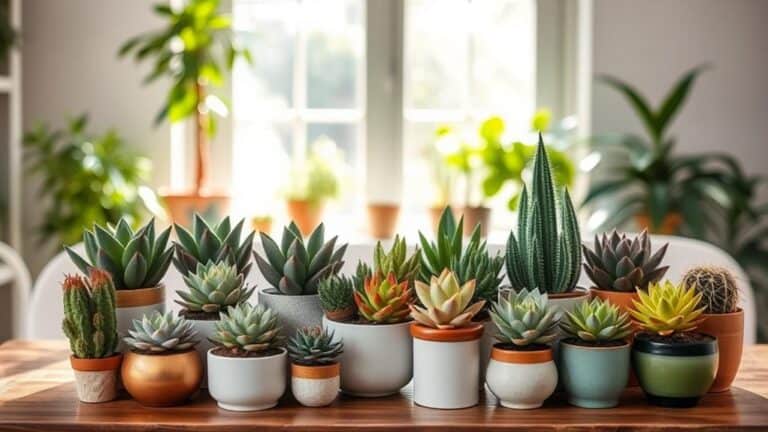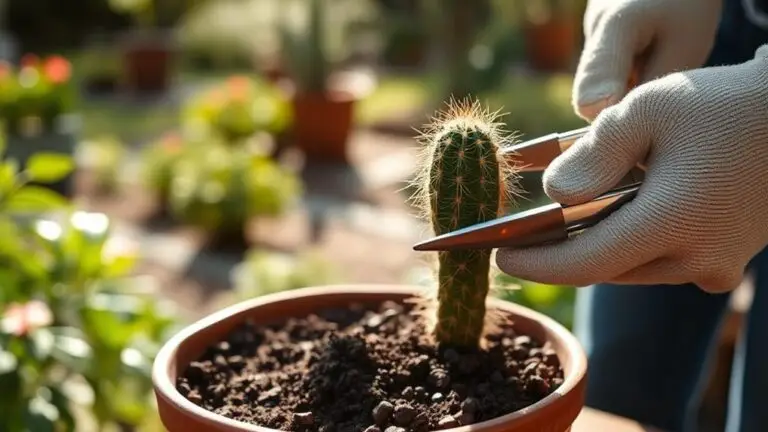5 Tips for Growing Succulents Anywhere
If you're looking to grow succulents successfully, the journey starts with choosing the right varieties for your climate. Not all succulents thrive everywhere, so selecting cold-hardy types for cooler regions is essential. But that's just the beginning. You'll also need to optimize your soil and potting techniques to prevent dreaded root rot. Have you ever wondered about the best watering practices for these resilient plants? There's a bit more to it than just a splash here and there. Plus, engaging with gardening communities can offer invaluable insights. Ready to transform your succulent care routine to the next level?
Select the Right Succulents
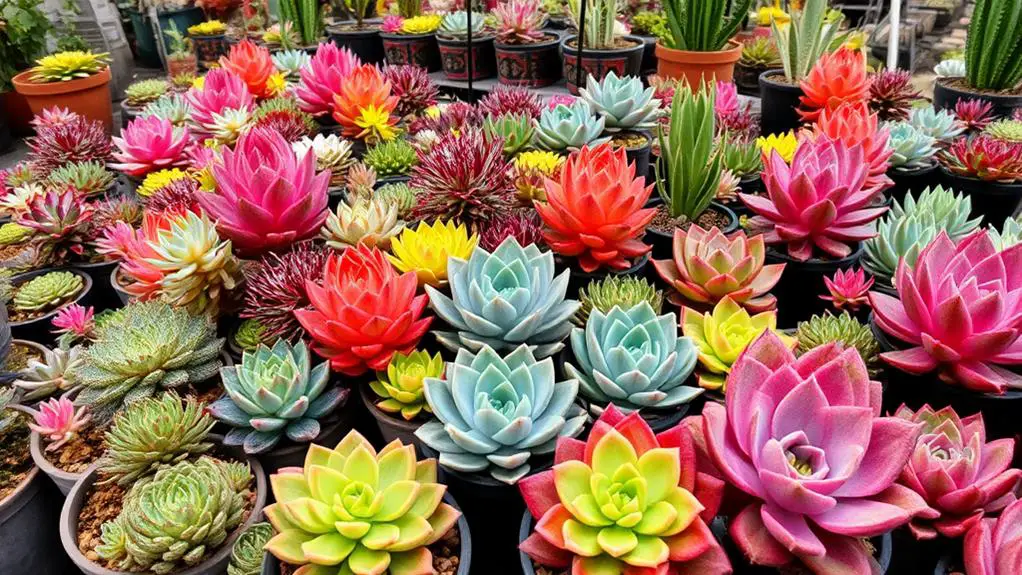
Choosing the right succulents for your garden or home can be a game-changer, especially when you consider factors like climate and sunlight.
Start by thinking about the growing conditions in your area. If you live in a place with cold winters, cold-hardy succulent varieties like sedum and sempervivum are perfect. They can survive in planting zones 3-9, handling lower temperatures better than other types.
In humid climates, opt for succulent varieties that tolerate moisture well. Kalanchoe is a great choice because it can thrive even when humidity levels are high.
For those who prefer indoor gardening, popular indoor succulents like crassula, string-of-pearls, and aloe are excellent options. These varieties grow well in typical household conditions with enough light.
Research is key to successful succulent planting. Different succulent types have different sunlight needs. Some love full sun while others do better in partial shade.
Don't forget to visit local garden centers. They often carry outdoor succulent varieties suited to your specific region, making your selection process easier.
Optimize Soil and Potting
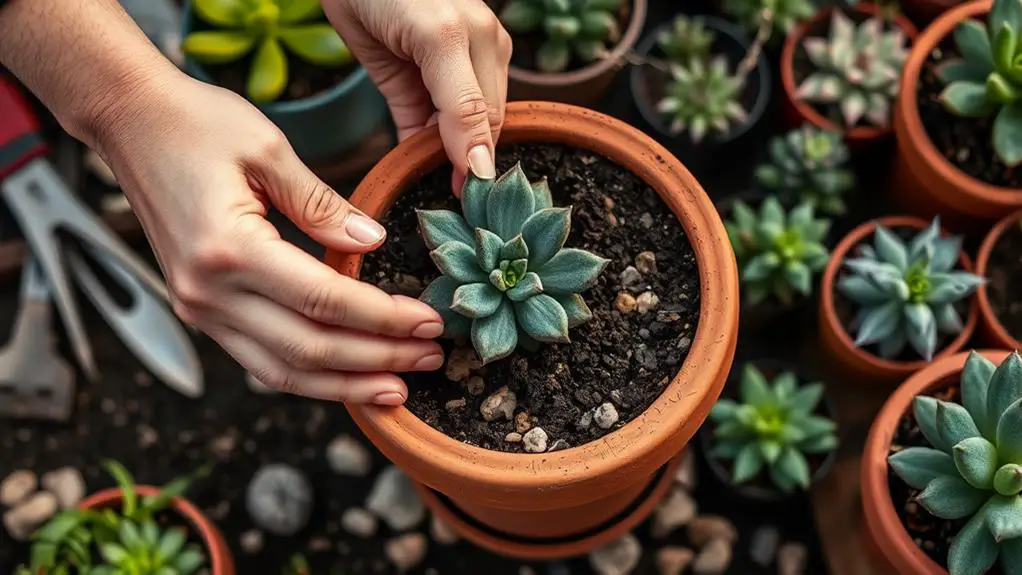
After selecting the right succulents for your space, the next step is to optimize their soil and potting conditions. Start with well-draining soil specifically designed for succulents. This type of soil usually includes a mix of 60% nonorganic materials like sand or pumice. These materials improve drainage and prevent root rot, which is common in succulents if they sit in water too long.
Choose terra cotta pots for your succulents. Terra cotta is a porous material that allows air to flow through the soil, helping it dry out faster. This reduces the risk of overwatering. Make sure your pots have drainage holes. These holes let excess water escape, keeping your succulent's roots healthy.
Regularly refresh the soil to maintain its nutrient levels and drainage qualities. Even commercial mixes can lose their gritty texture over time.
Adding nonorganic mulches like crushed rock or gravel on top of the soil helps retain moisture while preventing weeds. This mulch also promotes soil dryness, which succulents love.
Master Watering Techniques
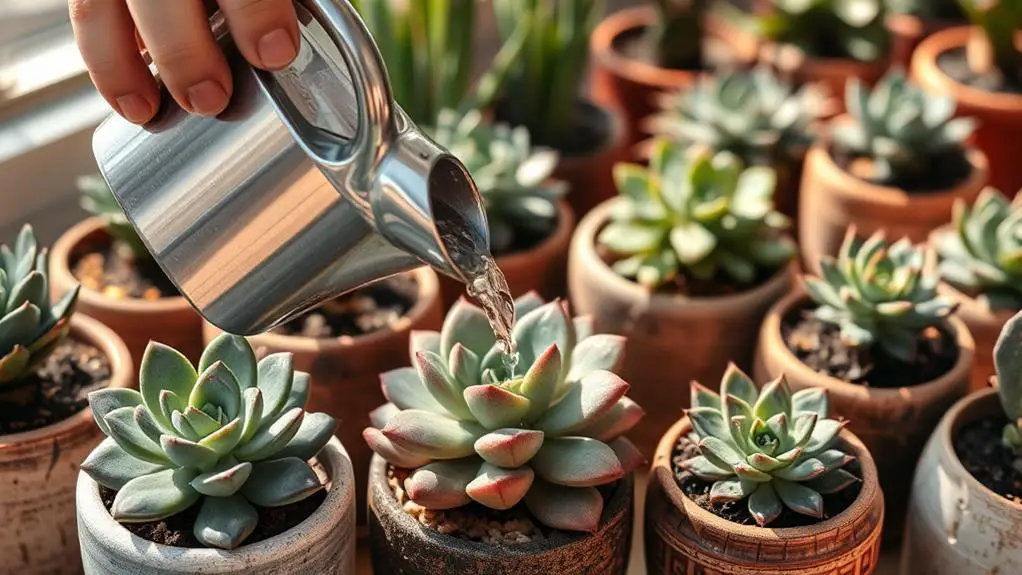
Mastering watering techniques is essential for maintaining healthy succulents. You'll want to water deeply but infrequently, ensuring the soil dries out completely between waterings. This helps promote root respiration and prevents rot.
Adjust your watering frequency by season: increase during spring and summer when succulents are growing, and reduce in winter when they enter dormancy.
Monitor soil moisture by checking that the top 2 inches of soil are dry before rewatering. This indicates when your succulents need hydration. For more precise assessments, especially in container gardening, use a moisture meter to gauge soil moisture levels accurately.
Remember, good drainage is vital; without it, water can accumulate, leading to root rot.
Watering in the morning reduces evaporation and gives your plants time to absorb moisture before the day heats up. Avoid overhead watering to prevent leaf rot from excess moisture on the foliage. Instead, water directly at the base of the plant.
Engage With Community

Once you've mastered watering techniques, engaging with the succulent community can elevate your gardening experience.
Joining Facebook groups focused on succulent plants provides a great platform for sharing experiences and tips. You'll find yourself among fellow succulent growers who are always ready to help. Plus, you can access a supportive community that understands your passion.
Don't hesitate to immerse yourself in social media like Instagram. Showcase your succulent arrangements and discover diverse styles from around the world. It's amazing how much you can learn just by scrolling through other growers' posts.
Gardening forums are another excellent resource. By participating in discussions, you can enhance your knowledge of succulent care techniques. Ask questions, share your successes, and learn from others' experiences. It's a fantastic way to grow your skills.
Subscribing to newsletters from local gardening centers or succulent clubs keeps you informed about events and workshops. These resources often offer seasonal care tips that are invaluable for maintaining healthy plants.
Lastly, taking part in succulent swap events is a fun way to foster community engagement. You'll get to diversify your collection with unique varieties, all while meeting fellow gardeners.
Embrace these opportunities and watch your succulent garden thrive!
Experiment and Innovate**

To take your succulent gardening to the next level, start by experimenting with different soil mixtures.
Mix in materials like sand, pumice, or coconut coir to find the ideal balance for drainage and moisture retention in your specific environment. This can help your succulents grow stronger and healthier.
Consider trying various pot types to see how they affect your plants.
Terra cotta pots dry out quickly, which can prevent overwatering, while ceramic pots offer versatility. You might find that different succulents respond better to different types of containers.
Next, monitor and adjust your watering frequency based on local climate conditions.
Use a moisture meter to help you determine when your succulents need water. This can prevent common issues like overwatering, which is a major cause of succulent troubles.
- Experiment with different soil mixtures for ideal drainage and moisture retention.
- Use various pot types to see how they affect your succulents' growth.
- Adjust watering frequency based on local climate and use a moisture meter.
Frequently Asked Questions
Can You Grow Succulents Anywhere?
You can grow succulents almost anywhere by choosing the right varieties for your environment. Make certain they get proper light, temperature, and drainage. Adjust your care routine according to local weather conditions to help them thrive.
Where Is the Best Place to Plant Succulents Outside?
The best place to plant succulents outside is a sunny, well-ventilated spot that gets at least 6 hours of sunlight daily. Avoid high-traffic areas and use well-draining soil or containers to prevent moisture issues.
What Are the Best Conditions for Succulents Outside?
You need to guarantee your succulents get at least 6 hours of sunlight daily. Choose a well-draining soil mix, avoid waterlogged areas, and provide good air circulation. Keep them sheltered during heavy rain to prevent root rot.
How Do You Stimulate Succulents to Grow?
To stimulate succulent growth, make certain they get at least 6 hours of sunlight daily, water deeply but infrequently, use well-draining soil, and fertilize during spring and summer. Adjust care based on your local climate conditions.
Conclusion
You've got this! By choosing the right succulents, using well-draining soil, and mastering your watering techniques, you'll see your plants thrive. Don't forget to join gardening communities for extra support and inspiration. Don't be afraid to experiment—every garden is unique. With these tips, you'll grow beautiful succulents anywhere. Just be patient and enjoy the process. Happy gardening!

